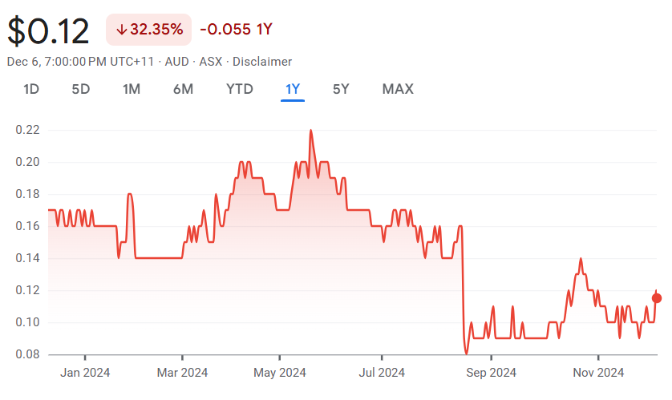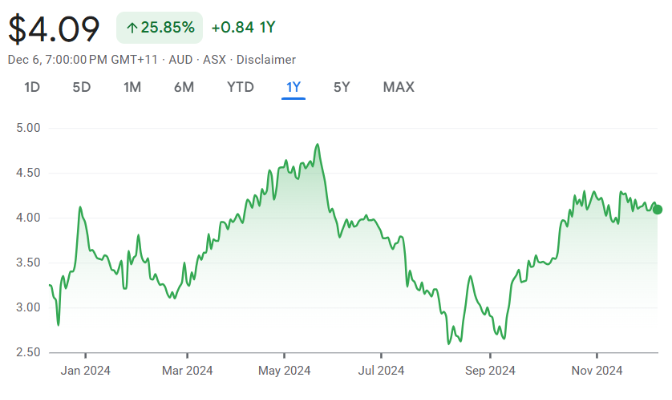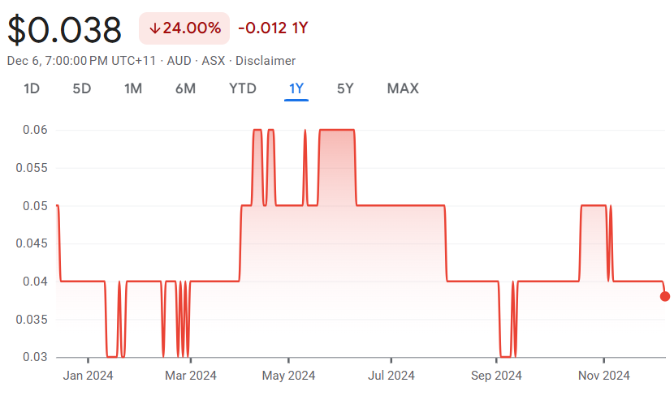Understanding Silver as a Commodity
Silver occupies a unique position in global markets as both a monetary and industrial metal. It is valued for its role as a hedge against inflation and currency volatility while serving critical functions in electronics, solar panels, and medical technologies. This dual demand makes silver prices highly sensitive to both macroeconomic sentiment and manufacturing activity. When global economies expand, industrial demand often drives silver higher, and during uncertain periods, investors turn to it as a safe-haven asset. Supply remains constrained, as most silver is mined as a by-product of lead, zinc, or copper production. This structural limitation contributes to volatility but also enhances price leverage when demand outpaces mine output.
What are ASX Silver Stocks?
ASX silver stocks are Australian-listed companies engaged in the exploration, development, or production of silver and silver-rich polymetallic deposits. Only a limited number of pure silver producers exist on the ASX, as many miners operate across multiple commodities. These stocks provide investors with exposure to global silver prices while benefiting from Australia’s stable regulatory environment and investor familiarity with resource-sector equities. Leading examples include Adriatic Metals (now part of Dundee Precious Metals, ASX: DPM), Silver Mines Limited (ASX: SVL), and Sun Silver (ASX: SS1), all of which offer varying levels of production, development progress, and exploration upside. Investing in such companies provides greater leverage to rising silver prices but introduces additional operational and jurisdictional risks compared with holding physical silver or ETFs.
Why Invest in Silver Shares
Silver shares offer an attractive way to capture amplified returns relative to movements in the underlying metal. A moderate increase in the silver price can translate into significant profit margin expansion for efficient producers. These equities also provide exposure to exploration success, resource upgrades, and new project developments, which can re-rate valuations independent of spot price changes. Unlike owning bullion, investors in silver companies can benefit from dividends, capital growth, and management’s ability to unlock hidden value. Silver’s role as both an inflation hedge and an industrial input adds diversification to portfolios, bridging the gap between defensive and growth assets. However, higher volatility, cost inflation, and execution risk must be carefully evaluated before investing in the sector.
Get the Latest Stock Market Insights for Free with
Stocks Down Under & Pitt Street Research
Join our newsletter for exclusive insights, market trends, investment tips, and updates delivered directly to your inbox. Don't miss out – subscribe today and make informed investment decisions.Join our newsletter and receive exclusive insights, market trends, investment tips, and updates delivered directly to your inbox. Don't miss out – subscribe today and make informed investment decisions.
How to Choose the Right ASX Silver Stocks
Selecting quality ASX silver stocks requires analysis of several key fundamentals. Resource size, grade, and project economics are essential indicators of value. Investors should focus on companies with defined JORC-compliant resources, robust feasibility studies, and low all-in sustaining costs (AISC). Jurisdictional stability and environmental approvals also influence long-term project viability. Management track record, capital discipline, and funding strategies can determine whether a project successfully transitions from exploration to production. It is also important to assess each company’s sensitivity to silver prices versus by-product metals such as lead or zinc. Upcoming catalysts, such as drilling results, permitting milestones, or financing announcements, can provide short-term opportunities for re-rating. Combining financial strength with operational efficiency often identifies the most resilient performers in volatile markets.
3 Best ASX Silver Shares To Buy Now In 2025

Silver Mines Limited (ASX: SVL)
Silver Mines Limited (ASX: SVL) is a leading player in the ASX silver space, focusing on the development of its major Bowdens Silver Project in Central New South Wales Thе company has made significant stridеs in its flagship Bowdеns Silvеr Projеct, locatеd nеar Mudgее, Nеw South Walеs. The project saw an updatе in its Minеral Rеsourcе Estimatе in March 2023, indicating a substantial incrеasе and еnhancing the project's valuе and potential longеvity.

Adriatic Metals (ASX: ADT)
Adriatic Mеtals Plc rеprеsеnts a promising opportunity in thе ASX silvеr markеt, particularly with its stratеgic focus on thе high-gradе Varеs Silvеr Projеct in Bosnia & Hеrzеgovina. This project, fully ownеd by Adriatic, has rеachеd a significant milеstonе with thе complеtion of thе first orе drivе and thе initiation of orе stockpiling.

Investigator Resources (ASX: IVR)
Invеstigator Rеsourcеs Limitеd is stееring a promising coursе with its Paris Silvеr Projеct, situatеd nеar Kimba in South Australia. This 100% ownеd vеnturе stands as thе company's principal assеt. Thе projеct's rеcеnt updatе on thе Minеral Rеsourcе Estimatе (MRE) rеflеcts a positivе trajеctory. Thе updatеd MRE, incorporating an additional 76 drill holеs since 2021, rеvеals a 7% incrеasе in silvеr rеsourcеs, now amounting to 57 Moz of silvеr and 99 kt of lеad.
3 Best ASX Silver Shares To Buy Now In 2025
Silver Price and the Impact on Silver Stocks and silver production
Silver briefly surged above US$50 per ounce in October 2025 for the first time since 1980 before settling near US$48 per ounce. The rally was driven by industrial demand, investor inflows, and tightening physical supply. Analysts from HSBC and Bloomberg Intelligence have raised their 2025 silver forecasts to around US$34–36 per ounce, noting that structural deficits could extend into 2026. Rising energy costs and lower base-metal production have further constrained global supply. For ASX producers and developers, higher silver prices translate directly into wider margins and improved project economics. Elevated prices also enhance funding access, enabling companies to accelerate exploration or expansion. However, sustained profitability depends on disciplined cost management and hedging strategies, as commodity cycles remain unpredictable. Companies with diversified revenue streams and low AISC figures are best positioned to outperform in this high-price environment.
Gold-Silver Ratio: A Crucial Indicator for Investors
The gold-silver ratio, which measures how many ounces of silver are required to purchase one ounce of gold, is a valuable barometer for relative valuation. Historically, the ratio has averaged around 60:1, but it peaked near 88:1 in 2024 before narrowing to about 80:1 by mid-2025, indicating that silver was undervalued relative to gold. As the ratio contracts in 2025, silver tends to outperform on a percentage basis. Investors often monitor this metric to identify cyclical turning points, as a falling ratio can signal renewed strength in silver markets. While gold remains the dominant precious metal in portfolios, the current ratio suggests scope for silver to close the performance gap. ASX silver stocks stand to benefit disproportionately if this convergence continues into the following year.
Thе Impact of Silvеr Supply and Dеmand on Silvеr Stocks
Global silver markets remain in structural deficit as industrial demand exceeds mine supply. The Silver Institute projects a record production shortfall of around 185–200 million ounces in 2025, marking the fourth straight annual deficit. Solar panels, electric vehicles, and electronics now account for about 54 per cent of total silver demand in 2025 (based on the Silver Institute’s 2025 World Silver Survey). At the same time, limited exploration spending and declining ore grades are restricting new supply. For ASX-listed miners, this dynamic underpins stronger pricing power and valuation support. Companies with existing production or advanced development projects can capture immediate benefits, while explorers may see speculative interest if they discover new deposits. Prolonged deficits could sustain higher prices well beyond short-term cycles, reinforcing the case for selective exposure to silver equities.
Investing in Physical Silver vs. Silver Stocks
Investors have two main options for gaining exposure to silver: physical silver or silver stocks. Both investment types come with their advantages and drawbacks.
Physical Silver
Physical silver, held in the form of bullion, coins, or exchange-traded funds, offers the most direct exposure to the metal’s spot price. It carries minimal counterparty risk and serves as a traditional hedge against inflation, currency depreciation, and financial uncertainty. Investors often choose physical silver for wealth preservation, as its value tends to hold steady during market downturns. However, this form of investment generates no income and incurs storage, insurance, and liquidity costs, making it less appealing for those seeking high returns. Physical silver works best as a defensive allocation in a diversified portfolio rather than a primary growth asset.
Silver Stocks
Silver mining and exploration shares provide a more dynamic way to capitalise on the metal’s price movements. When silver prices rise, well-managed producers can experience outsized earnings growth, while explorers benefit from valuation re-ratings driven by new discoveries or resource upgrades. These equities combine commodity exposure with corporate growth potential, offering greater upside than holding the metal alone. On the downside, silver stocks carry operational, financing, and jurisdictional risks, which can amplify volatility. They are better suited to investors with longer time horizons who can tolerate market swings in pursuit of higher overall returns.
The Role of Silver in a Diversified Investment Portfolio
Silver plays a multifaceted role within diversified portfolios. It acts as an inflation hedge similar to gold while offering exposure to industrial growth sectors like renewable energy and technology. Including silver stocks alongside traditional equities can improve risk-adjusted returns, as their performance often diverges from mainstream markets. During periods of monetary easing or currency depreciation, silver typically strengthens, providing a defensive layer. Conversely, in industrial upswings, its dual demand profile enhances cyclical upside. For Australian investors, ASX silver shares add a global commodities component without requiring foreign brokerage access. Position sizing should remain moderate due to volatility, but small allocations can materially enhance diversification and portfolio resilience.
Silver in a Future Driven by Technology
Technological innovation continues to reshape silver demand. The metal’s superior electrical conductivity makes it indispensable in photovoltaic cells, electric vehicles, and next-generation electronics. The International Energy Agency projects that renewable technologies could boost industrial silver consumption by roughly 40 per cent by 2030 compared with 2020 levels. Medical equipment, semiconductors, and antimicrobial coatings are also expanding end-use applications. As global manufacturing shifts towards cleaner and smarter systems, silver’s relevance extends far beyond jewellery or investment use. ASX companies with exposure to high-grade deposits are well positioned to capitalise on this long-term demand trend. Sustained technological adoption suggests that silver will remain a critical material in the transition to a low-carbon, digital economy.
Pros and Cons of Investing in ASX Silver Stocks
Advantages of ASX silver stocks include leveraged exposure to silver price movements, potential dividends from producers, and corporate value creation through exploration or project expansion. These equities allow investors to participate in Australia’s mining expertise and regulatory stability while gaining international resource exposure. However, risks remain significant. Operational delays, funding constraints, and commodity-price volatility can affect valuations. Many explorers rely heavily on capital markets, making them vulnerable to dilution. In addition, silver’s dual nature as both an industrial and precious metal means its price can fluctuate sharply with global economic sentiment. Conducting due diligence on cost structures, jurisdictional risk, and management capability is critical before committing capital to the sector.
Future Outlook of ASX Silver Stocks
The medium-term outlook for ASX silver stocks appears constructive. Continued industrial expansion, global electrification, and potential monetary easing by major central banks are expected to support higher silver prices. Market analysts forecast that silver could trade between US$33 and US$38 per ounce for 2026, based on consensus estimates from major banks, though some bullish forecasts suggest prices could exceed US$45 if supply deficits persist. Producers with established operations stand to benefit first, while advanced developers may attract takeover interest from larger miners seeking silver exposure. Exploration activity across Australia and North America is likely to increase as funding conditions improve. Nevertheless, sustained gains will depend on disciplined capital allocation, geopolitical stability, and consistent investor confidence in the broader commodities complex.
Are ASX Silver Shares a Good Investment?
ASX silver shares represent a high-beta opportunity within the resource sector. For investors seeking diversification beyond gold, they offer exposure to both precious-metal hedging and industrial growth. The combination of constrained supply, rising renewable-energy demand, and increasing investor interest supports a favourable long-term thesis. However, volatility remains inherent due to market sentiment and operational risk. Allocations should align with individual risk tolerance and investment horizons, typically favouring medium- to long-term positions. With disciplined selection and ongoing monitoring, silver equities on the ASX can provide significant upside potential in the current commodity cycle.
FAQs on Investing in Silver Stocks
The share prices of silver stocks are impacted by several factors, including the silver price, the company's silver output, silver supply and demand, and broader stock market trends.
Our Analysis on ASX Silver Stocks
Here are 5 ASX resources stocks with New Zealand projects
In this article, we’re taking a look at ASX resources stocks with New Zealand projects. It is easy for investors…
Activist investors: Here’s what you need to know about them and 4 famous Australian activists to watch out for
Hear the term ‘Activist investors’ and you might think of GetUp, the progressive activist group that forced Woolworths to hold…
Here Are 4 Dogs of the ASX that will Bounce Back With a Vengeance in FY26, and 4 That Won’t
Have you ever heard the term Dogs of the ASX? It can either allude to the worst stocks in the…
Here are Our 11 Top ASX Stocks to Buy in FY26: 1 From Each Sector!
It is a New Financial Year, so it’s time to outline 11 Top ASX Stocks to Buy in FY26. Why…
Australian Critical Minerals (ASX:ACM) gets set in Llamaland, Peru!
Let’s take a look at Australian Critical Minerals (ASX:ACM). And we’d like to do something we don’t normally do when…





